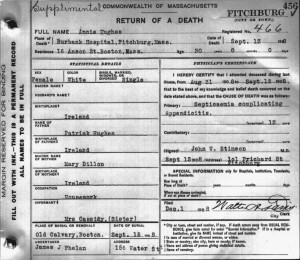
Recently, I had a client who wanted to know more about a silver teapot designed by the Hurd silversmiths of Boston that had been passed down through his family. The teapot had the name “Sally Brown” engraved on it, but to his knowledge, he did not have any Brown relatives, which made the teapot a bit of a mystery.
With some research, we found a connection to the Brown family through ancestor Amey Martin (1784–1852), the wife of Samuel Nightingale Richmond; her parents were Silvanus Martin (1748–1819) and Amey Brown (1749–1833) of Providence, Rhode Island. Though I located a connection to a Brown family, my client’s direct ancestry did not contain anyone named Sarah or Sally Brown. Continue reading Keeping it in the family








